Early Life
John William Beer was born June 1922, in Bishopsteignton, Devon.
Son of Willam Henry Beer and Mary Jane Beer (née Roberts). William Henry Beer was born in Bishopsteignton in 1881 and lived with his family in Ashwell, a short distance west of the main village. Mary Jane Roberts was born in Morchard Bishop in Mid-Devon on 12 October, 1884. William and Mary married January 1904, in Newton Abbot. They had their first daughter Phyllis in 1904, then son Henry (b 1906), daughter Dorothy (b 1907), two more son’s Francis (b 1909), Percy (b 1920) and finally John was born in June 1922. By 1939 only William, Mary and Percy remained in the family home. William was a retired builders labourer and Percy was an Estate labourer. [1]
Military Service
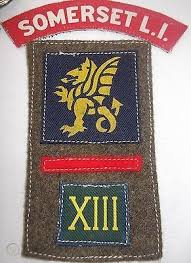
Somerset LI Badge
John William Beer served in the 4th Battalion of the Somerset Light Infantry (Prince Albert’s) as a Private, 5682633.
The Somerset Light Infantry was a light infantry regiment of the British Army, which served under various titles from 1685 to 1959. The regiment raised 11 Battalions for service during the Second World War, in addition to the regular Army Battalions the 4th Battalion formed part of the Territorial Army. [2]
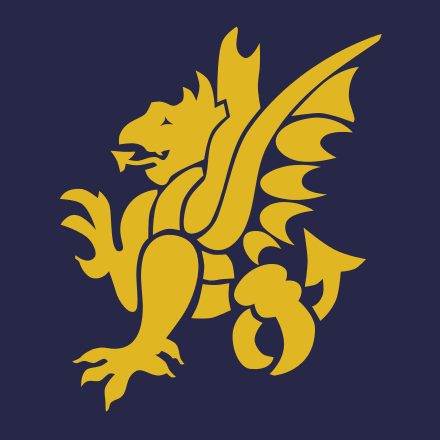
43rd (Wessex) Infantry Division Badge
Throughout the war, the 4th Battalion, Somerset Light Infantry served with the 129th Brigade, alongside the 4th and 5th Wiltshire Regiment, part of the 43rd (Wessex) Infantry Division. [3]
The 4th Battalion served in the North West Europe Campaign shortly after the Normandy landings on 6 June 1944, D-Day. The 43rd (Wessex) Division performed well in Normandy and was considered by many senior British officers to be one of the best divisions of the British Army during the Second World War. [4]
For the rest of the war Bernard Montgomery, commanding all British and Canadian troops in the campaign, preferred to use formations such as 43rd (Wessex) to spearhead his assaults. This was mainly due to issues of morale because veteran formations such as the 7th Armoured, which had seen extensive service in North Africa and the Mediterranean (and fought poorly in Normandy, according to senior officers), were judged as tired and war-weary with morale being almost dangerously fragile. With formations that had spent years in the United Kingdom training such as the 43rd (Wessex), 11th Armoured, 15th (Scottish) and 59th (Staffordshire) Divisions the problem of morale wasn’t such an issue.
The 4th Battalion became involved in trench warfare similar to that of the Great War. They later played a large part in the disastrous Operation Market Garden, a small role in the Battle of the Bulge and finally took part in Operation Plunder, the crossing of the River Rhine by the Allies.
Death and Burial
Several weeks after Operation Neptune (D-Day) the 4th Battalion formed part of the British Second Army in the Battle for Caen against the German Panzergruppe West. Operation Epsom began on 26 June, to capture the high ground south of Caen.
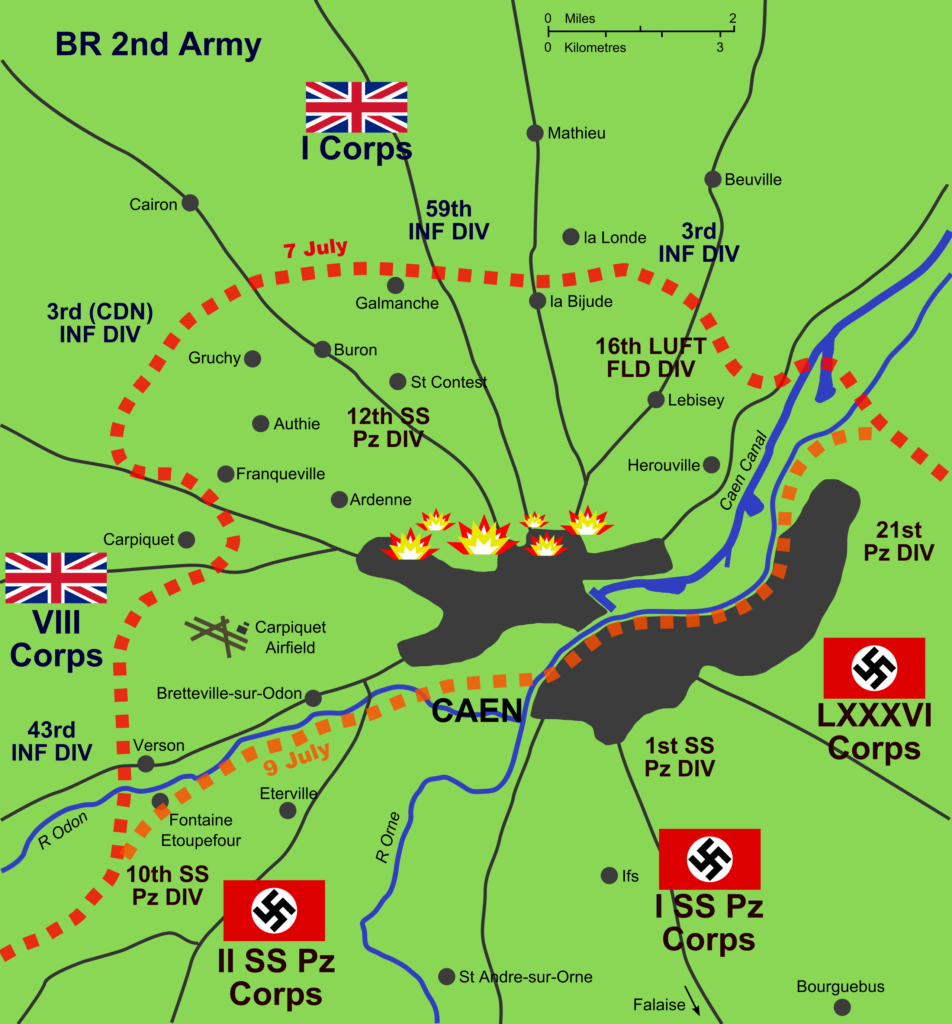
Battle for Caen, July 1944
The operation was supported by 736 guns, the Royal Navy, close air support and a preliminary bombardment by 250 RAF heavy bombers. Around the 28th June the 43rd Wessex Infantry Division had secured a foothold across the River Odon (shown pushing from the West in the map above) but were under fierce counter-attacks, by the German I SS Panzer Corps and II SS Panzer Corps, which led to a withdrawal from some of the British positions across the river by 30 June. [5]
During the battle, “the 4th Somersets suffered 556 casualties out of a strength of 845. Between 26 June and 14 July, 4th SLI received 19 reinforcement officers and 479 ORs as replacements.”
Operation Epsom cost the Second Army up to 4,078 casualties. VIII Corps suffered 470 men killed, 2,187 wounded and 706 men missing.
During 1 July, a further 488 men were killed and wounded and 227 were reported missing. It is quite possible that Private Beer was killed or mortally wounded at around this time.
John William Beer died in the Battle of Normandy, France on 6th July, 1944.
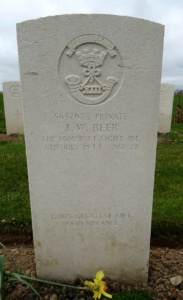
Beer Gravestone
Burial
Secqueville-en-Bessin War Cemetery
Secqueville-en-Bessin, Departement du Calvados, Basse-Normandie, France
Plot
II. B. 4.
Memorial ID
59200005 [6]
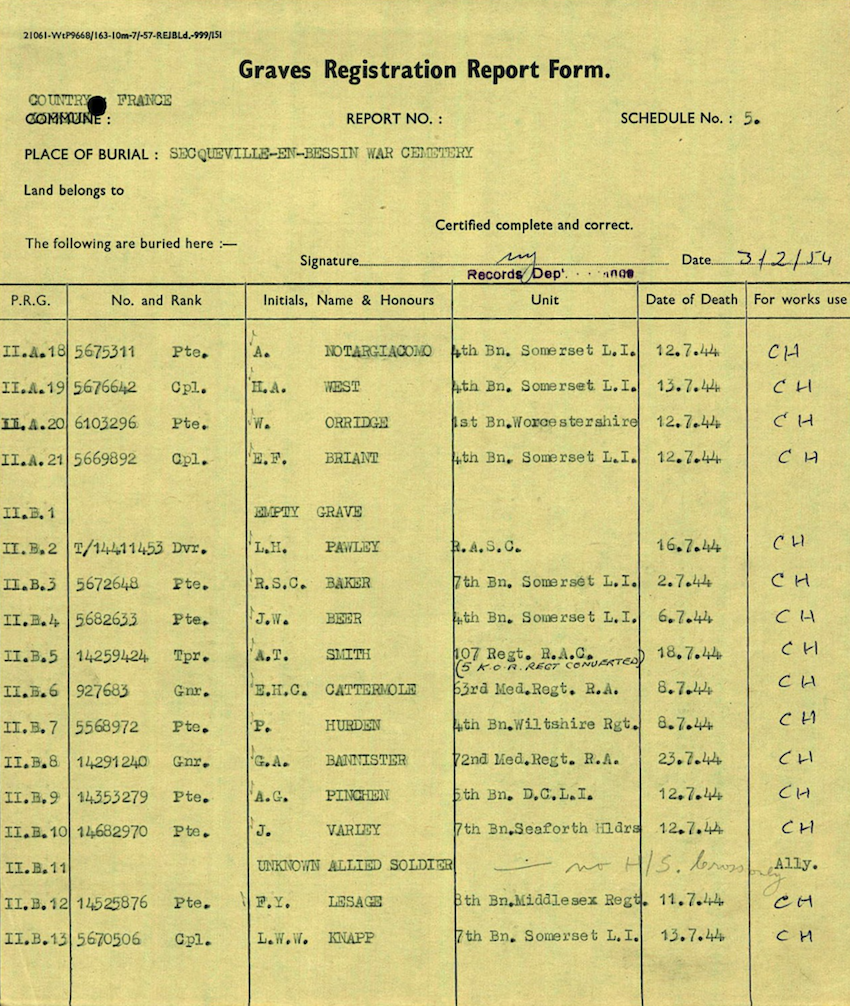
Beer Grave report

Beer Register
Descendants
John William Beer is not survived by any direct descendants.
John’s father William lived in Devon until he passed away on 1 May, 1968. His mother Mary also passed away in Devon, in September 1976.
If you are related to him in any way or have any information you would like to share with us, please contact us directly or feel free to comment below.
John William Beer is remembered by the village of Bishopsteignton.
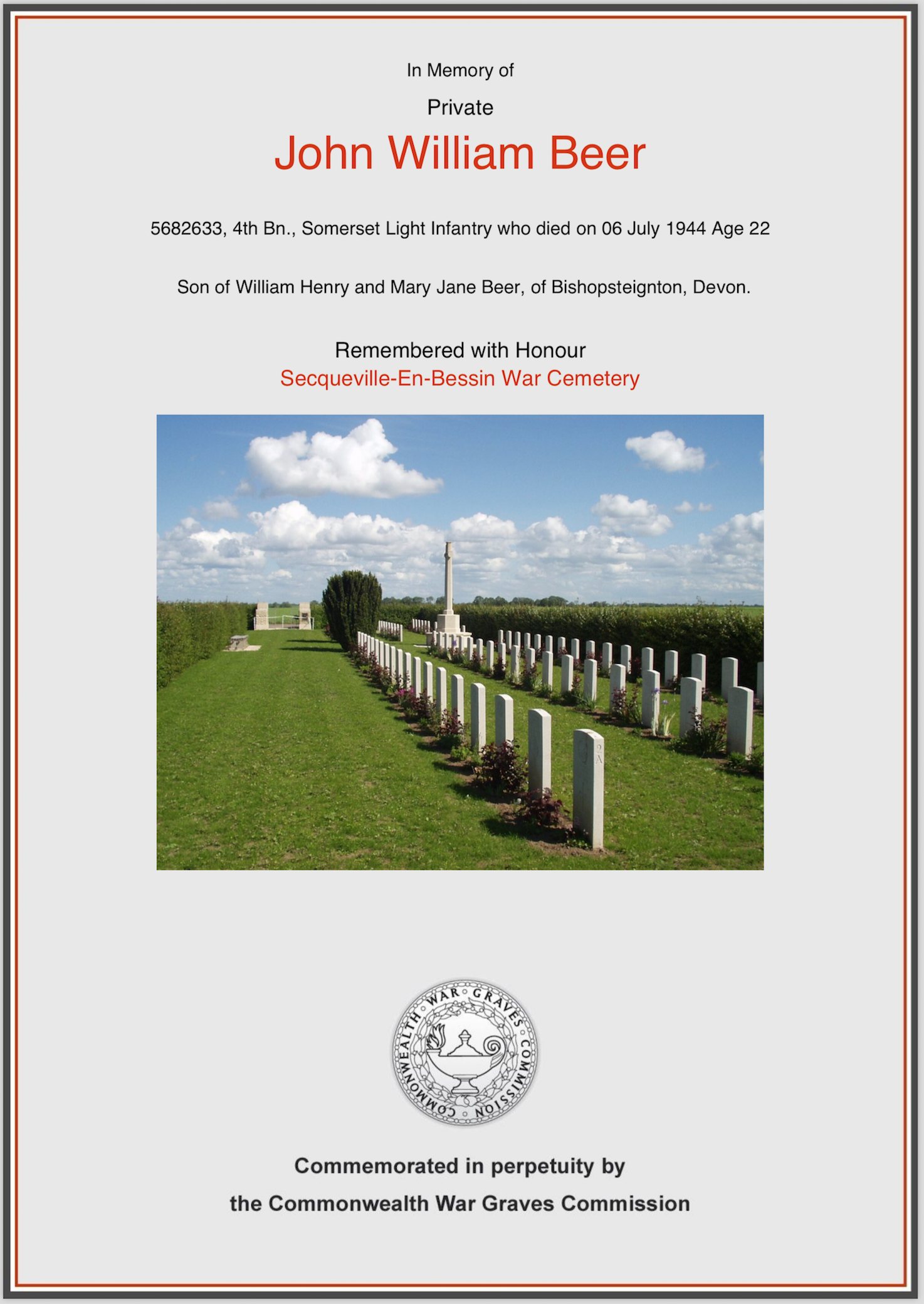
Beer memorial [7]
